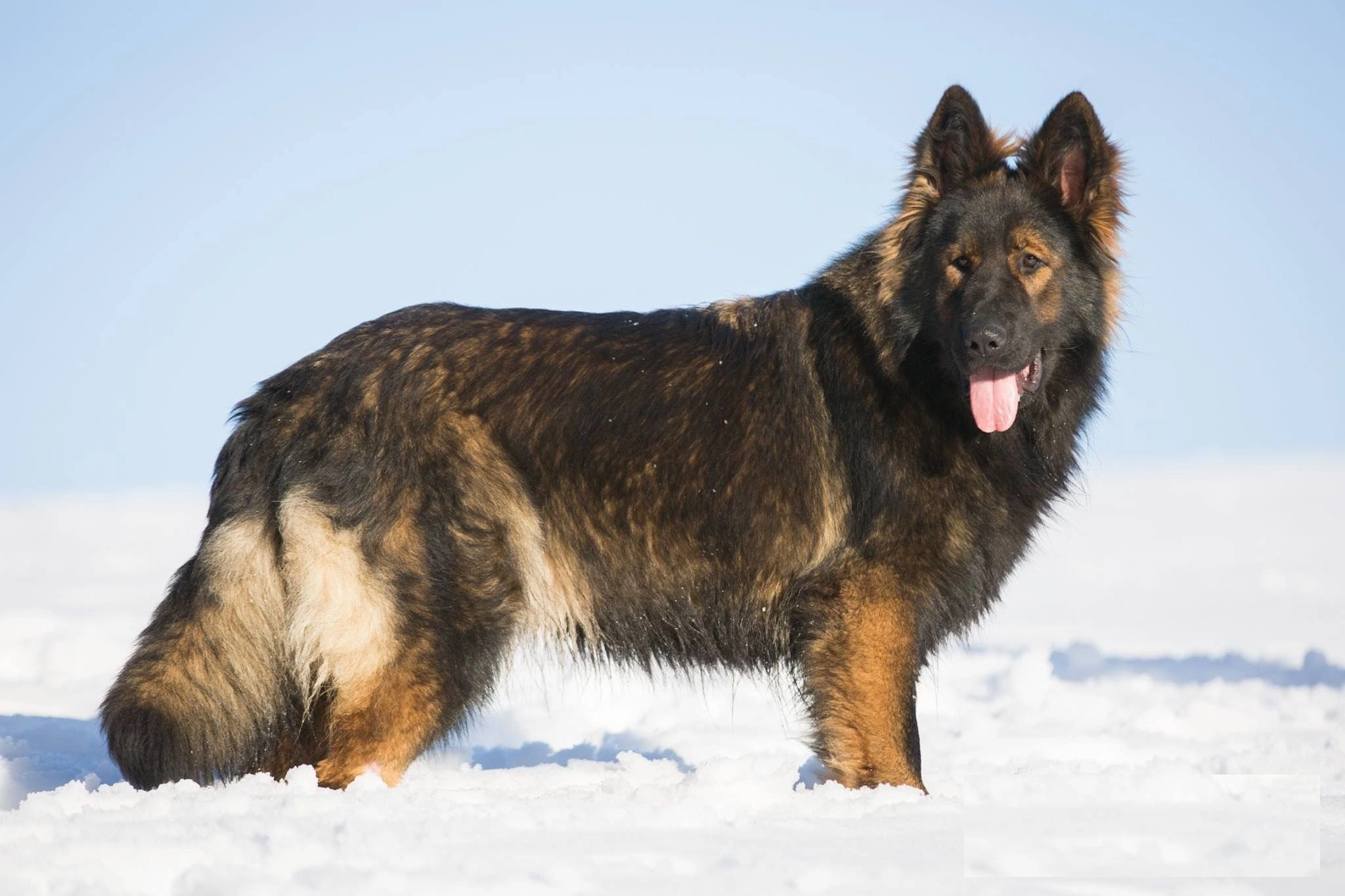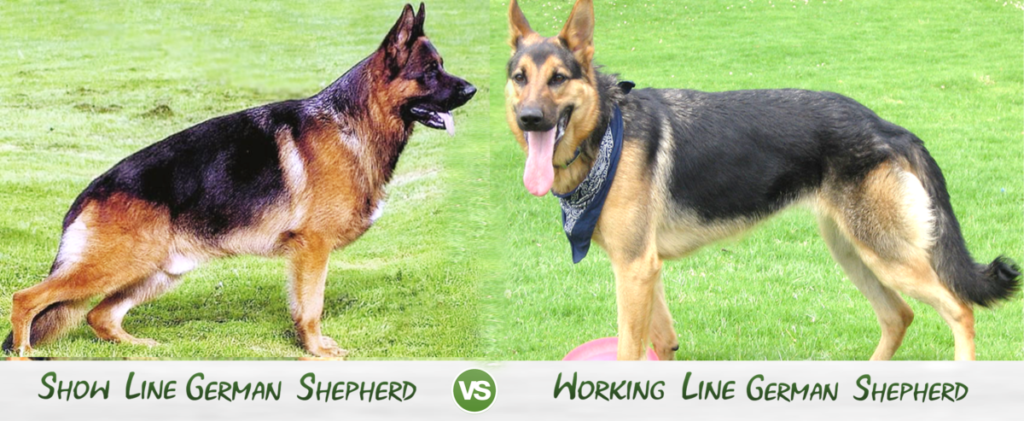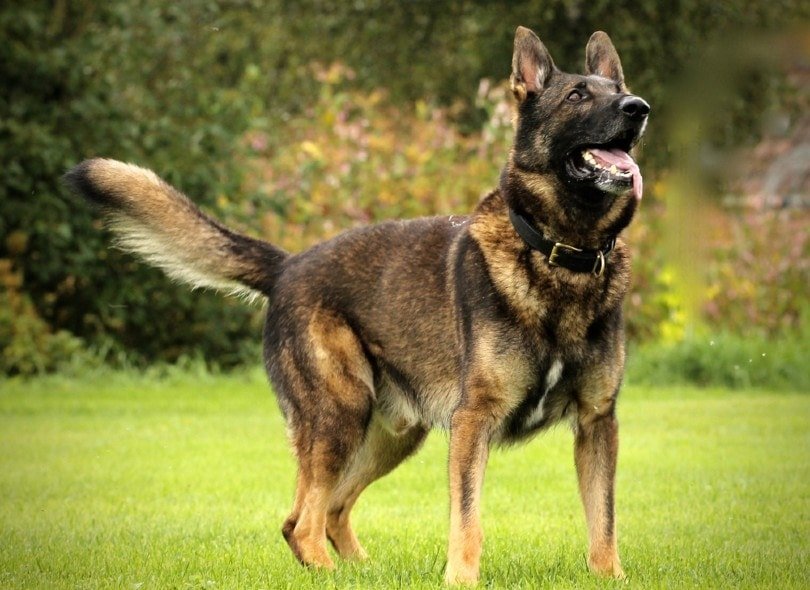Did you know German Shepherds have split into two main types: Working Line and Show Line? These two types are so different they’re almost like different breeds. If you’re thinking about getting a German Shepherd, knowing the difference between these lines is key.
Table of Contents
In this guide, we’ll look at the special traits, origins, and what each line is best for. Whether you want a dog for protection or a show dog, you’ll learn what’s best for you by the end.
Key Takeaways
- German Shepherds have diverged into two distinct lines: Working Line and Show Line
- Each line has its own unique physical traits, temperament, and suitability for different roles
- Understanding the differences between these lines is crucial for prospective German Shepherd owners
- Working Line German Shepherds are better suited for protection, service work, and active lifestyles
- Show Line German Shepherds are bred for their distinctive appearance and conformation, but may not excel in demanding work
- Proper research and matching the German Shepherd line to your needs is essential for a successful canine-human partnership
- Consulting reputable German Shepherd breeders can help you find the right fit for your lifestyle

Understanding German Shepherd Bloodlines: What Sets Them Apart
To truly appreciate the German Shepherd dog breed, it’s key to grasp the unique bloodlines that have developed over time. This breed has a rich history, starting in the late 19th century in Germany. Breeders worked to improve the german shepherd temperament and conformation, leading to different lines with their own traits.
The Evolution of Different German Shepherd Lines
The original German Shepherd was a versatile working dog, bred for tasks like herding, guarding, and military service. As the breed became more popular, two distinct lines emerged: the working line and the show line. Working line breeders aimed to keep the breed’s exceptional working abilities. Show line breeders focused on the german shepherd’s conformation and physical look.
Historical Development and Breeding Goals
The history of german shepherd breeders has always balanced the breed’s function and beauty. Early leaders like Max von Stephanitz, the German Shepherd Dog’s founder, envisioned the breed’s working potential. As the breed spread worldwide, breeders in different places adapted their goals to meet local needs and tastes.
Modern Classification of Bloodlines
Today, there are several distinct bloodlines in the breed, each with its own features. These include the traditional working line, the show line focused on conformation, and new lines trying to blend both. Knowing these differences is vital for potential owners to find the german shepherd temperament and traits that fit their lifestyle and needs.

Working Line German Shepherd vs Show Line German Shepherd: Key Differences
German Shepherds come in two main types: working line and show line. Knowing the differences is key for those looking to choose the right dog for their lifestyle.
The main difference is their original purpose. *Working line German Shepherds* are bred for protection, law enforcement, and military work. On the other hand, *show line German Shepherds* focus on conformation and physical appearance for competitions.
These purposes shape their physical and behavioral traits. Working line German Shepherds are more muscular, agile, and driven. They have a strong protection and obedience instinct. In contrast, show line German Shepherds have a more aesthetically-pleasing appearance. But they may not have the same working drive and intensity.
“The working line German Shepherd is an incredible working dog, while the show line German Shepherd is more focused on appearance and conformation.”
Each line is better suited for different roles and lifestyles. Working line German Shepherds shine in protection, service, and law enforcement. Show line German Shepherds are great as family companions or obedience competitors. Knowing these differences helps owners choose the right German Shepherd for their needs.
Physical Characteristics and Appearance Comparison
Working Line and Show Line German Shepherds have clear physical differences. We’ll look at their body structure, size, weight, and coat types.
Body Structure and Conformation
The Working Line German Shepherd is more muscular and athletic. They have a slightly sloping back and a longer body. In contrast, the Show Line German Shepherd has a straighter back and a more compact body.
Size and Weight Variations
The german shepherd size of Working Line dogs is often larger. Males are about 24-26 inches tall, and females are 22-24 inches. They weigh more, with males at 65-90 pounds and females at 50-70 pounds.
Show Line German Shepherds are generally smaller. Males are 24-26 inches tall, and females are 22-24 inches. They weigh less, with males at 60-85 pounds and females at 45-65 pounds.
Coat Colors and Patterns
Both types of German Shepherds have various german shepherd conformation coat colors. These include black and tan, sable, solid black, and solid white. However, the Show Line tends to have a more uniform coat pattern. The Working Line may have a more varied or subtle pattern.
Temperament and Personality Traits
German Shepherds have different temperaments based on their line. Working line dogs are known for their strong protective instincts and loyalty. They have lots of energy and need lots of training and mental challenges.
These traits make them great for jobs like law enforcement and search-and-rescue. They are also excellent at protecting their families and homes.
Show line German Shepherds are more relaxed and family-friendly. They are smart and trainable, but not as intense as working line dogs. They are better suited for indoor living and getting along with kids.
Even though they are not as high-energy, they can still learn to obey well. Their main role is to be a loving companion, not for specialized work.
“The working line German Shepherd’s unwavering loyalty and high energy make it well-suited for roles in law enforcement and military, while the show line’s more relaxed temperament lends itself to family life.”
Choosing between a working line or show line German Shepherd depends on your lifestyle. It’s important to know the differences in their temperaments and personalities. This helps you pick the right dog for your family.
Training Requirements and Working Capabilities
German shepherds from the working line and show line have different skills. The german shepherd protection abilities of the working line are stronger. They are bred for guarding, police work, and military service. These dogs are very good at german shepherd obedience training, showing they are eager to please.
Show line German shepherds may not be as focused on german shepherd protection. But, they can still learn german shepherd agility and other fun activities. They are great family pets, needing patience and consistency in training.
Protection and Service Work Aptitude

The working line German shepherd is perfect for protection and service jobs. They are used in law enforcement, military, and security. Their sharp senses, courage, and obedience are key assets.
Obedience and Agility Performance
Both types of German shepherds do well in obedience and agility. But, working line dogs might have an edge. Their natural drive and trainability make them stand out.
Family Integration and Adaptability
Working line German shepherds need special training and a dedicated owner. But, show line dogs are more suited for family life. They are calm, eager to please, and great with children and pets, with the right training.
Conclusion
In the world of German Shepherds, there’s a big difference between working line and show line. These two types have evolved for different reasons. Working line German Shepherds are all about function, agility, and service. On the other hand, show line German Shepherds focus on looks and how they stand.
Choosing between a working line or show line German Shepherd depends on your lifestyle and what you want. Working line German Shepherds are great for jobs like police work and search and rescue. Show line German Shepherds are perfect for families. German Shepherd breeders are key in keeping these lines alive and matching each dog with the right home.
Whether you prefer the show line’s beauty or the working line’s toughness, German Shepherds are amazing. Knowing the differences helps you choose the right dog for you. You’ll get a loyal friend, whether it’s a working line German Shepherd vs show line German Shepherd.

